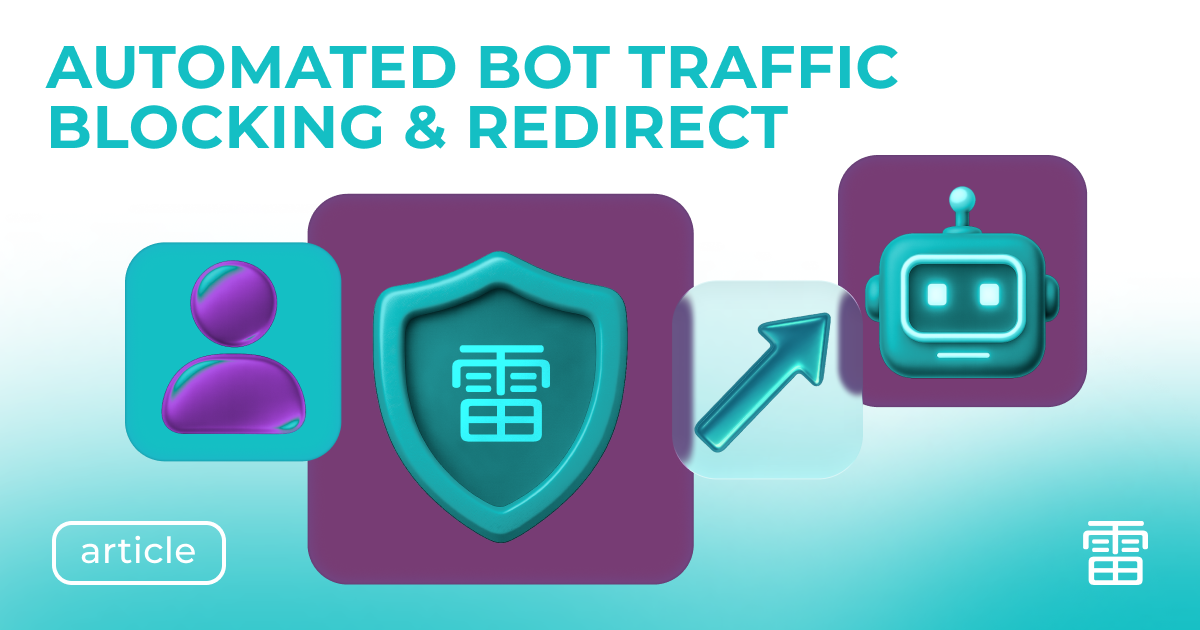Bots aren’t always millions of zombie clicks from data centers. More often, they’re “smart” scripts that behave almost like humans: clicking, opening landing pages, even simulating scrolls. The problem is simple: they will never become your customers.
Manual filtering or post-factum analytics (“let’s check the report tomorrow”) no longer works. By the time you analyze, the budget is already gone. The solution is an automated blocking and redirect system that reacts in the moment — at the click itself.
In this guide, we’ll break down:
- what components such a system needs,
- how redirect logic actually works,
- which metrics matter to avoid mistakes,
- and most importantly — how to build this into your ad strategy.
Why You Need Automated Blocking and Redirect
The Problem with Manual Approaches
Many advertisers start simple: upload a blacklist of IPs and update it once a week. This can stop “script kiddies” on proxies — but not real fraud schemes.
Fraudsters rotate IP pools, spoof user agents, and disguise themselves as real users. If you only react after the fact, you’re always one step behind.
What Automation Changes
An automated system allows you to:
- Save money instantly. Bots never reach your landing page = no wasted spend.
- Reduce load on systems. Fewer junk clicks → cleaner analytics.
- Protect partnerships. You bring facts and logic to the table, not just emotions.
Core Components of the System
1. Signal Collection
- IP & Geo checks: VPNs, data centers, proxies.
- Fingerprinting: device/browser stability, hardware parameters.
- Early behavior patterns: abnormal click frequency, repeated user agents.
2. Decision Logic
- Pre-click filters: block before the advertiser pays for the click.
- OnResponse logic: if fraud is detected after the click, trigger redirect.
3. Redirect Path
- Fraudulent traffic → sandbox or blank page.
- Clean traffic → advertiser’s landing page.
The goal: not just drop the click, but reroute it without breaking partner flows or reports.
How Redirect Works in Practice
- A user clicks the ad.
- The system runs instant checks: IP, fingerprint, behavior.
- If the signals look fine → the click goes to the landing page.
- If suspicious → redirect activates:
- to a placeholder (white page), or
- to an alternate flow (e.g., a lower-priority offer).
That way, you maintain control of traffic flow while isolating bot clicks.
Metrics to Power Redirect Logic
- Hidden Page % — if 70% of clicks are invisible → pop/automation fraud.
- Session Time — visits <5 seconds = non-human.
- Repeated Fingerprints — same device across thousands of clicks.
- CTR vs Viewability — high CTR but low visibility = click inflation.
- Conversion Depth — are users reaching step two (confirmation, purchase)?
These metrics aren’t just for reports — they feed your redirect logic.
Risks and How to Avoid Them
- False positives. Over-filtering cuts real users. Solution: whitelists + adaptive rules.
- Speed. Redirect checks must complete within 200–500ms, or clicks get lost.
- Partner friction. If you hide too much, partners may push back. Solution: share transparent reports.
Use Cases
Case 1: Pop-under Network
Before redirect, 40% of budget was wasted on background visits. After Hidden Page filtering: -35% IVT and stronger partner trust.
Case 2: Affiliate Team
OnResponse logic sent bots to a blank page, humans to offers. Result: reduced technical losses and CR up by 12%.
Case 3: E-commerce Advertiser
Previously spent days manually analyzing logs. With automation, fraud is filtered at the click. Funnel became cleaner, client LTV grew by 18%.
How to Build This Into Your Strategy
- Define metrics that trigger blocking.
- Use pre-click + onResponse together. It’s a pair, not “either-or.”
- Set whitelists for trusted sources.
- Share reports with partners to maintain trust.
- Start with soft rules, then tighten them gradually.
Conclusion
Bot traffic isn’t something you can “defeat once and for all.” But you can build a system that manages the risk automatically and saves money instantly.
Automated blocking and redirect isn’t just a filter — it’s an optimization tool:
- less junk traffic,
- cleaner analytics,
- more transparent partner relations.
At Kaminari Click, we call this smart control: a system that reacts faster than any human can.
Book a demo with Kaminari Click and see how automated redirect can transform your strategy starting tomorrow.

